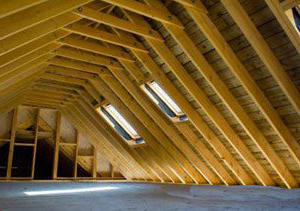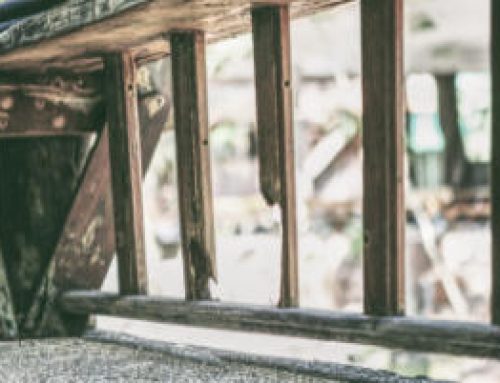While homes can be considered to be  sealed, proper attic ventilation is important to protecting your home and ensuring your comfort no matter what the season.
sealed, proper attic ventilation is important to protecting your home and ensuring your comfort no matter what the season.
Maintaining the right amount of air flow for attic ventilation is outlined by the International Building Code (IBC). The 2012 Edition “requires enclosed attics and enclosed rafter spaces formed where ceilings are applied directly to the underside of roof framing to have cross-ventilation for each separate space. This net free vent area (NFVA) shall not be less than 1:150 of the area of the space being vented…and ventilation openings must be protected to prevent rain or snow infiltration.” The code goes on to explain further requirements to be implemented by builders, contractors and roofers depending on the square footage of the attic space.
While homeowners don’t need to know the IRC code, they should understand how proper attic ventilation can affect their home. Proper air sealing and insulation will block heat entry from below in winter and resist heat transfer into the house in summer by using passive vents and natural air flow.
In summer, the natural air flow in a vented attic removes the heated air out of the attic through roof vents. This protects the roof and shingles from moisture and heat buildup. However, a mistake some homeowners make is to install too much insulation in the attic, or install it improperly, which can block the natural flow of air through the eaves.
In winter, the natural flow of cold air through the attic prevents ice dams that can damage roofs and gutters. It also protects against condensation that can build up from frost or water vapor and cause mold, mildew or wood rot, as well as poor air quality. You want your attic to be cold in winter and should never cover the attic soffit vents with insulation. Rafter vents and soffit vents should be used to maintain airflow.
Air flow should be balanced equally between the intake through vents in the soffit near the lower edge of the roof and the exhaust through vents located near the roof’s peak. For multiple ridge heights, the attic may need to be divided into separate sections to enable airflow.
The use of attic fans can increase attic air flow by drawing cooler air into the attic from soffit and gable vents, and venting the hot air to the outside. But without proper sealing of the attic from the rest of the house, and improper attic venting, the attic fans can draw air conditioning up through the home, thus increasing energy bills and reducing air conditioning effectiveness.
Först Consulting Group Can Inspect for Attic Ventilation Air Flow
Proper attic ventilation helps to prolong the life of building materials, lowers utility bills, and improves the comfort level inside the home. If you would like to check to ensure that your attic is properly ventilated and insulated, Först Consulting Group can help in several ways.
We can perform an energy audit using our highly-technical thermal imaging equipment that can spot “hot or cold” spots within the walls and around window and door seals. We can also perform a thorough visual inspection of your attic space and report any findings. With this information in hand, you can easily remedy any problems.
Contact us today to schedule your inspection.


